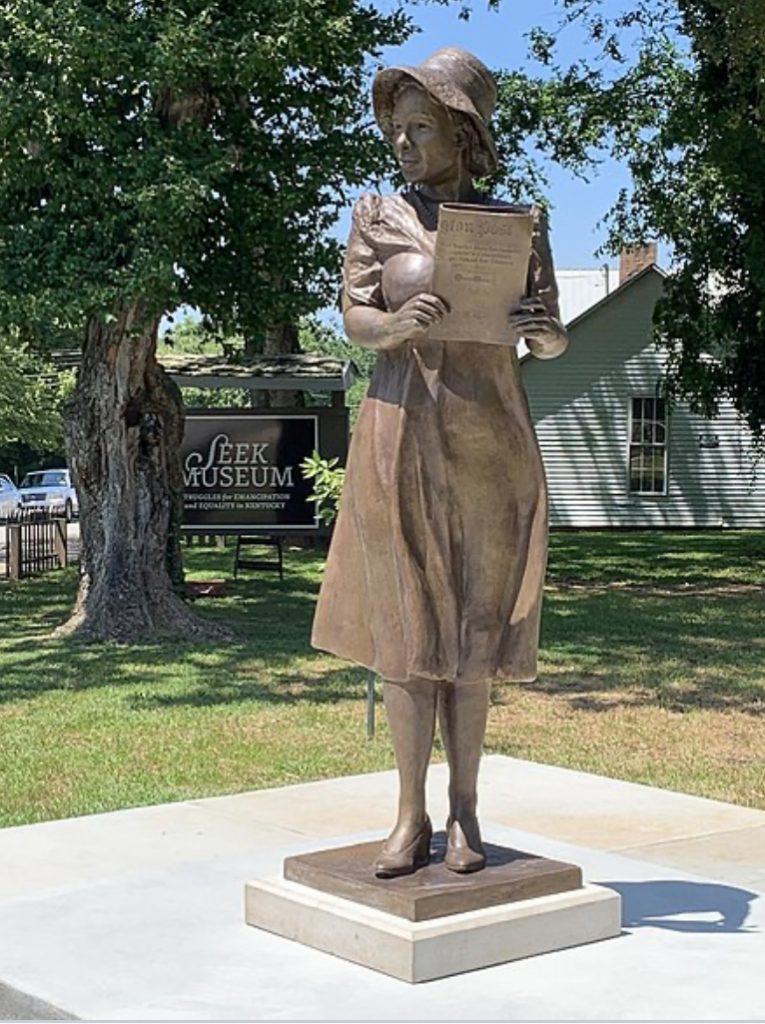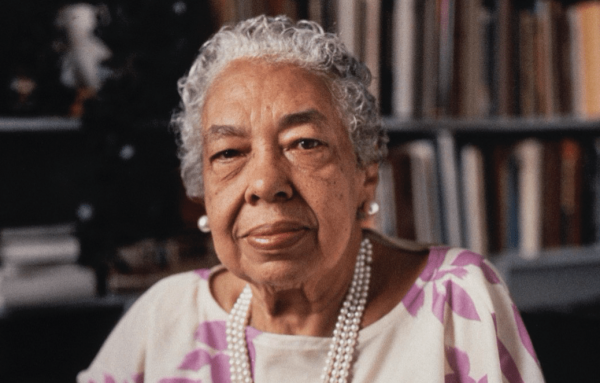“Race and sex were twin strikes against me. I’m not sure which was the hardest to break down.” [Alice Dunnigan]
Alice Dunnigan had an impressive record for breaking barriers. She has multiple firsts to her name, the First Black Woman to report the national news up close and personal.
She was born the daughter of a sharecropper and a laundress, but began attending school when she was four. When Dunnigan had completed the only ten years of education available to black children in Kentucky, her parents discouraged her from attempting to go forward. However, with encouragement from a Sunday school teacher, she attended college and studied to become a teacher. During her summers she cleaned graves in a white cemetery for a WPA project, as well as cleaning house, working at a dairy, and doing laundry.
In her 18-years of teaching she remarked that the text for her Kentucky History course had no mention of the contributions of African Americans. She remedied this by creating supplemental fact sheets for her classes that were later published, shortly before her death, as The Fascinating Story of Black Kentuckians: Their Heritage and Tradition.
During World War II Dunnigan moved to Washington, D.C. and worked at the War Labor Department. When the war ended, she worked as a reporter for the Associated Negro Press in Washington, an organization that provided stories to 112 African American newspapers across the United States. Her reporting career had actually begun when she was 13 and wrote one-sentence news items for the Owensboro Enterprise in Kentucky. Her dream of being a reporter was becoming reality. In 1947 her role enlarged and she because chief of the Associated Negro Press, a position she held for 14 years.
Because she was reporting on activities in Washington, D.C., she applied for press credentials to cover Congress, but was denied. Partly due to her persistence, she was granted press clearance and admitted to both the House and Senate press galleries, the First African American Woman, to be credentialed. She would later be the First African American Woman to gain press credentials for the Supreme Court and the State Department.
That same year Alice Dunnigan was the First African American admitted to the Women’s Press Club. She was not eligible for membership in the National Press Club because women were not admitted until 1970.
During Harry Truman’s 1948 campaign, Dunnigan was the first black journalist to accompany a president while he was traveling. She then became the First African American Woman to become a White House correspondent. When Eisenhower became President he required her to submit her questions in advance because she asked such difficult questions about race. She refused to do so and was not called on. When Eisenhower spoke in a whites-only theater she was barred from his speech.

Dunnigan stepped aside from reporting to join Lyndon Johnson’s presidential campaign, but John Kennedy defeated him. When President Kennedy took office, he answered Dunnigan’s tough questions in a straightforward manner—and he appointed her as education consultant to the President’s Committee on Equal Employment Opportunity. When Johnson became president, she was appointed to the President’s Commission on Youth Opportunity.
Dunnigan was inducted into the Kentucky Hall of Fame in 1982, a year before she died. Two years after her death she was inducted into the Black Journalist Hall of Fame. A bronze statue of Dunnigan, created in and now residing in her hometown of Russellville, Kentucky went on tour last year and spent time in the Newseum in Washington, D.C., a fitting ending to a reporting career in the nation’s capital.


Fascinating, Michele! Thank you so much for sharing this.